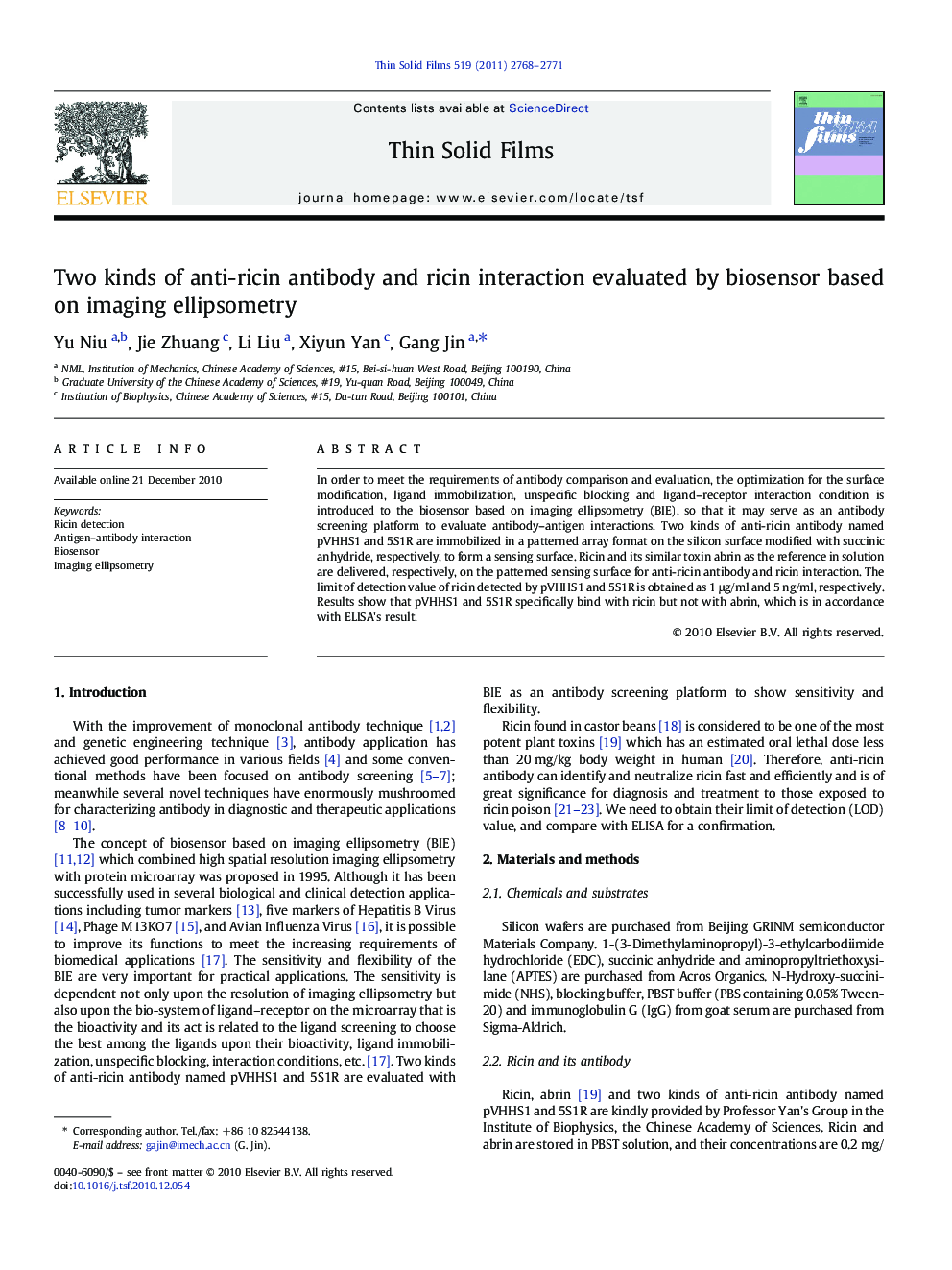| Article ID | Journal | Published Year | Pages | File Type |
|---|---|---|---|---|
| 10670424 | Thin Solid Films | 2011 | 4 Pages |
Abstract
In order to meet the requirements of antibody comparison and evaluation, the optimization for the surface modification, ligand immobilization, unspecific blocking and ligand-receptor interaction condition is introduced to the biosensor based on imaging ellipsometry (BIE), so that it may serve as an antibody screening platform to evaluate antibody-antigen interactions. Two kinds of anti-ricin antibody named pVHHS1 and 5S1R are immobilized in a patterned array format on the silicon surface modified with succinic anhydride, respectively, to form a sensing surface. Ricin and its similar toxin abrin as the reference in solution are delivered, respectively, on the patterned sensing surface for anti-ricin antibody and ricin interaction. The limit of detection value of ricin detected by pVHHS1 and 5S1R is obtained as 1 μg/ml and 5 ng/ml, respectively. Results show that pVHHS1 and 5S1R specifically bind with ricin but not with abrin, which is in accordance with ELISA's result.
Related Topics
Physical Sciences and Engineering
Materials Science
Nanotechnology
Authors
Yu Niu, Jie Zhuang, Li Liu, Xiyun Yan, Gang Jin,
